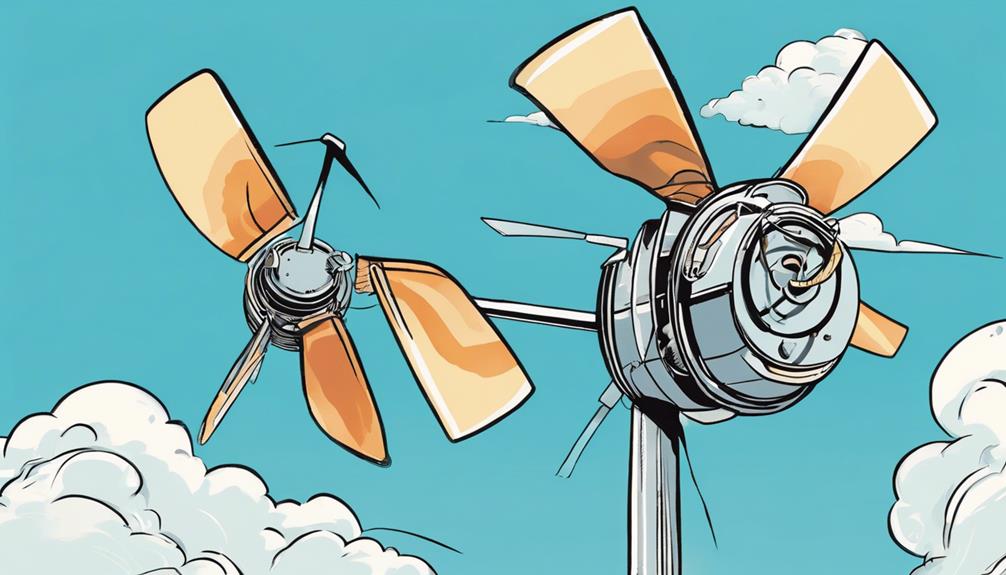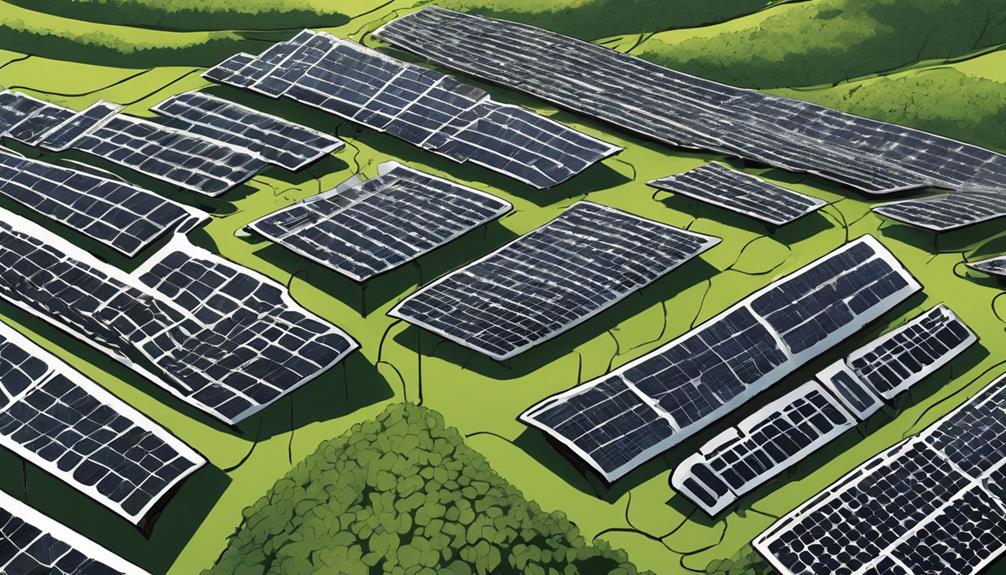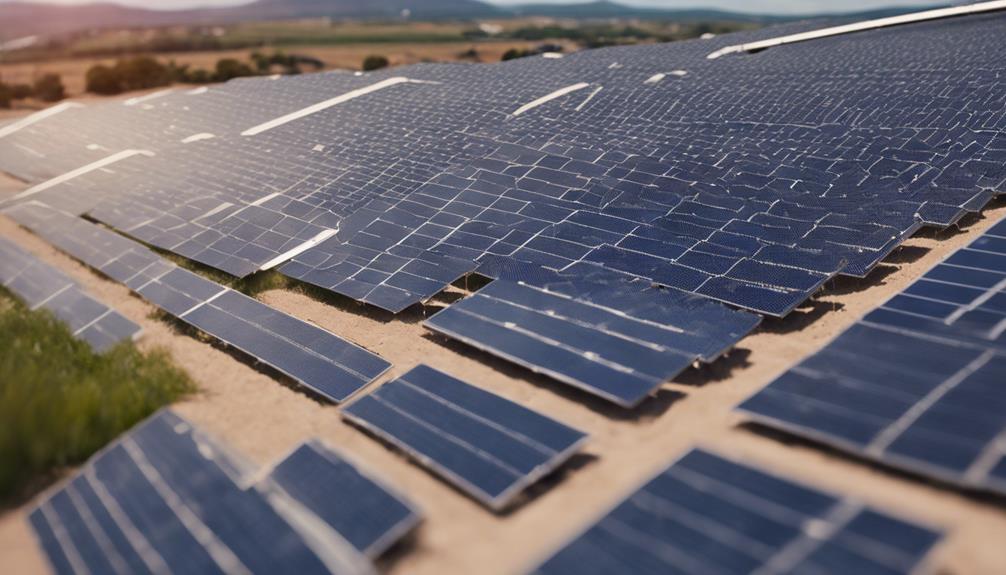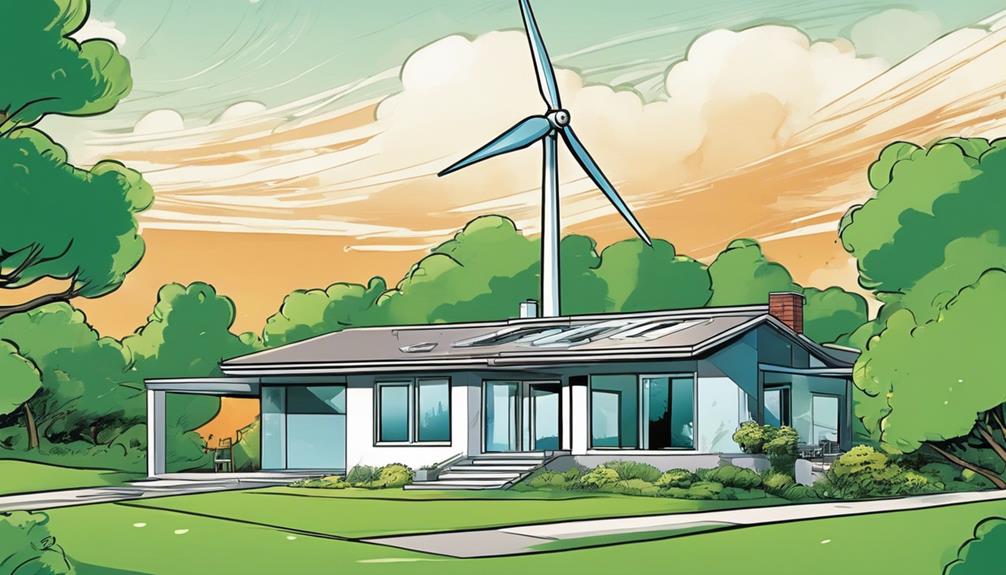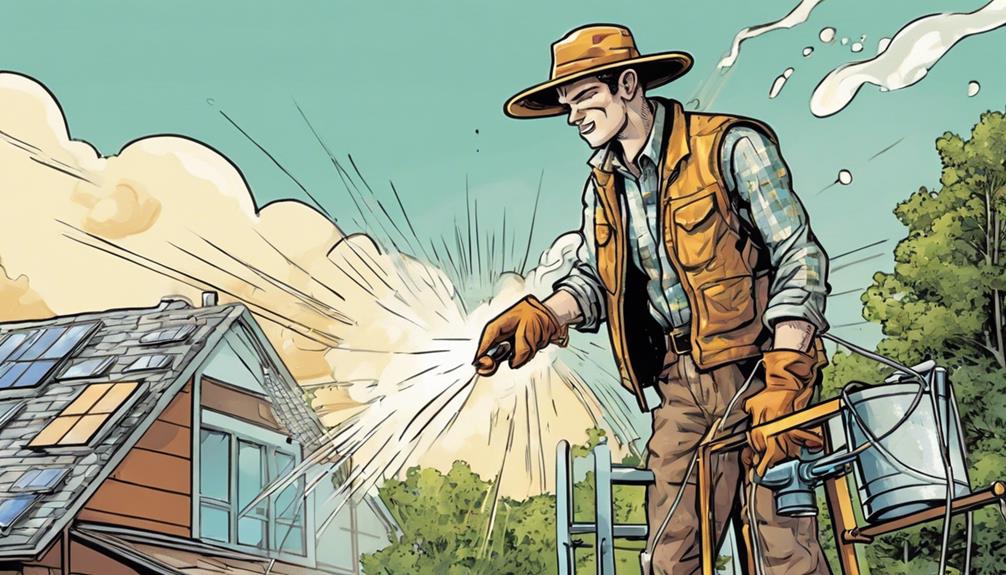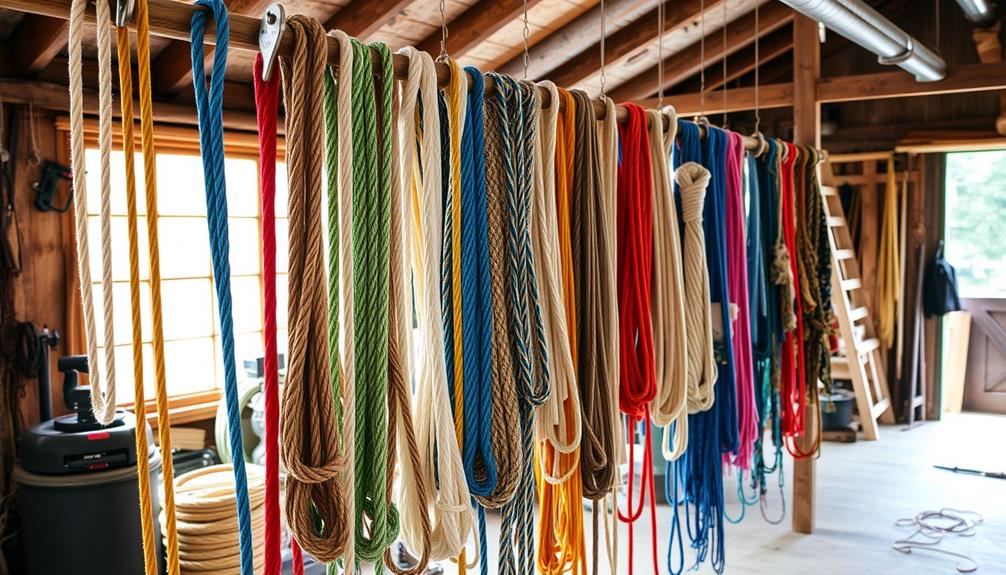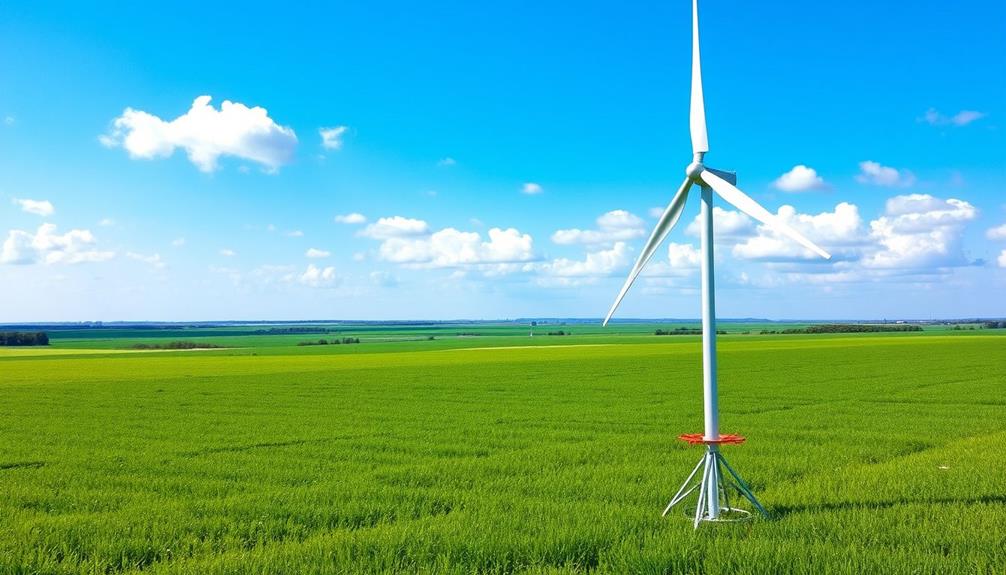They can convert their ceiling fan into a functional wind turbine with a few simple adjustments. First, they'll need to disassemble the fan, taking care to wear protective gear and turn off the power supply. Then, they'll choose the appropriate materials and blade configuration to optimize energy production. A well-designed housing and regular maintenance are also essential. With the right approach, they can generate electricity and reduce energy costs. By exploring these key considerations, they can harness the full potential of their DIY wind turbine project.
Key Takeaways
- Disassemble the ceiling fan carefully, removing blades and motor, and take necessary safety precautions to avoid injuries.
- Optimize blade configuration by selecting the right number of blades based on wind speed, budget, and energy production goals.
- Design and construct a new housing using lightweight, aerodynamic, and weather-resistant materials to maximize wind capture.
- Regularly inspect and maintain the wind turbine to ensure optimal performance, checking for loose screws, worn-out bearings, and blade wear.
- Consider safety and materials carefully, as they directly impact the efficiency and durability of the converted wind turbine.
Safety and Materials Considerations

When converting a ceiling fan into a wind turbine, safety precautions and materials selection are essential, as they directly impact the efficiency, durability, and overall success of the project.
Safety measures like wearing protective gloves and goggles during disassembly and construction are critical to prevent injuries. The choice of materials is equally important, as lightweight and durable materials like fiberglass or carbon fiber composites can withstand harsh wind conditions.
The length and shape of the blades also play a significant role in optimal wind capture and power generation. Additionally, selecting the appropriate power source based on energy needs is crucial to ensure a successful conversion.
Disassembling the Ceiling Fan

With the necessary safety precautions and materials in place, they can now begin disassembling the ceiling fan. This process starts by gathering the required tools, such as screwdrivers and pliers, and carefully removing the blades, motor, and other components.
It's crucial to turn off the power supply and use a ladder for safety during disassembly.
Be cautious of challenges like rusted screws or tight connections.
Remove the blades and set them aside for modification.
Take out the motor and any other electrical components.
Set aside any other parts that can be reused or repurposed.
Blade Configuration Options
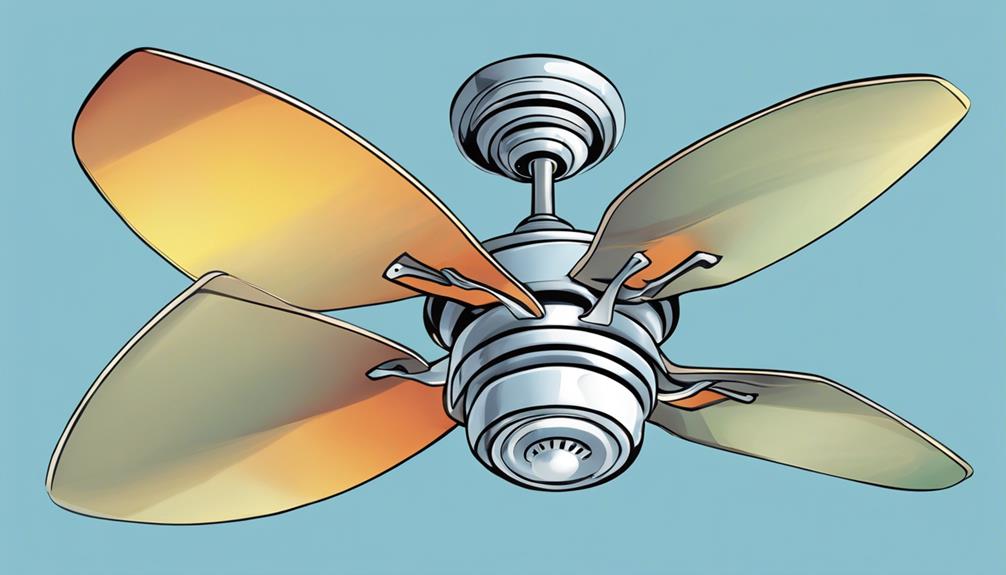
They now face the critical decision of choosing the right blade configuration, as it directly impacts the wind turbine's performance and energy production.
The number of blades is a key factor, with each configuration having its advantages. Two-blade turbines are cost-effective for low wind speeds, while three-blade turbines offer efficiency and less noise.
Four and five-blade turbines provide stability, increased energy production, and resistance against strong gusts. Environmental factors and budget constraints also influence blade configuration choice.
For instance, a two-blade turbine might be suitable for a small, rural setting, while a three-blade turbine might be better suited for a residential area.
Careful consideration of these factors is essential to optimize energy production and performance.
Housing Design and Construction

Designing the housing aerodynamically is vital to maximize wind capture and minimize turbulence, ensuring the wind turbine operates effectively. A well-designed housing can greatly impact the turbine's performance and energy production.
When constructing the housing, it's important to take into account the following key factors:
- Lightweight materials: Use materials like fiberglass or carbon fiber to minimize weight and enhance durability.
- Aerodynamic shape: Design the housing to reduce air resistance and optimize wind flow.
- Weather resistance: Guarantee the housing can withstand harsh weather conditions, including strong winds and extreme temperatures.
- Easy maintenance: Design the housing for simple access and maintenance to decrease downtime and increase efficiency.
Maintenance and Performance Tips
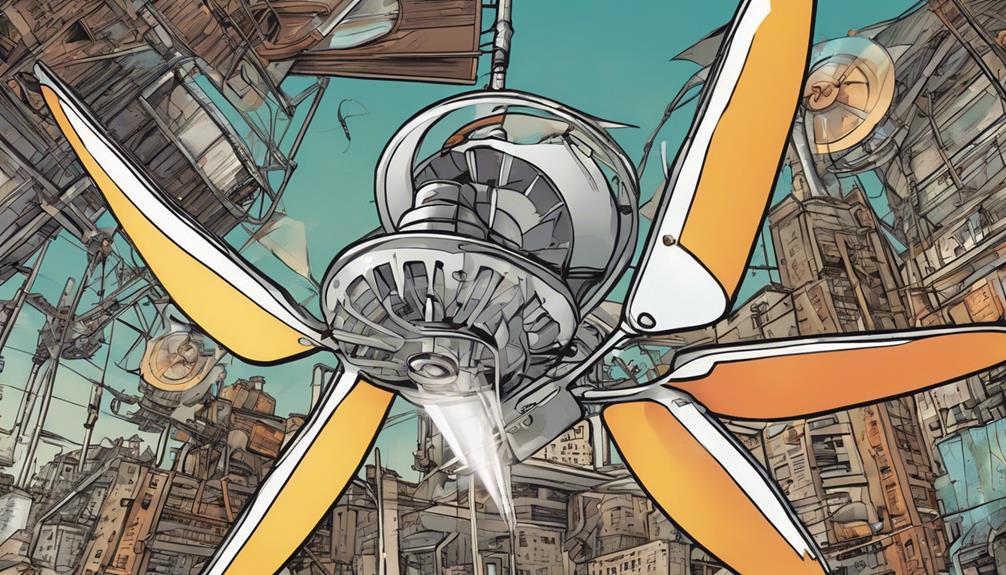
How can regular maintenance and performance checks guarantee the wind turbine operates at its maximum potential?
By conducting routine inspections, individuals can identify and address any issues before they become major problems. This includes checking for loose screws, worn-out bearings, and signs of wear on the blades.
Additionally, regularly cleaning the turbine's housing and blades can improve efficiency and reduce the risk of damage.
Performance checks should also be done to make certain the turbine is producing the expected amount of energy. This can be achieved by monitoring the turbine's power output and making adjustments as needed.
Frequently Asked Questions
Can I Use an Existing Wind Turbine Controller With My DIY Turbine?
They can likely use an existing wind turbine controller with their DIY turbine, but they'll need to verify compatibility with their specific turbine design and power output to avoid technical issues.
How Do I Calculate the Optimal Turbine Height for My Location?
'As the saying goes, 'measure twice, cut once.' To calculate the best turbine height, she considers factors like wind speed, direction, and obstacles, ensuring her DIY turbine maximizes energy production and minimizes interference.'
Are There Any Local Regulations or Permits Required for DIY Wind Turbines?
Before installing a DIY wind turbine, she should research local regulations and permits required, as zoning laws, noise ordinances, and building codes may apply, ensuring compliance and avoiding potential fines or removal.
Can I Connect My DIY Wind Turbine to the Grid or Only Use It Off-Grid?
She can connect her DIY wind turbine to the grid, but it requires a certified installer, meeting safety and performance standards, and obtaining necessary permits from the utility company and local authorities.
How Do I Determine the Ideal Rotor Diameter for My Wind Turbine?
She determines the best rotor diameter by considering factors like wind speed, energy needs, and Blade Configurations, ensuring efficient power generation and minimizing turbine size and material costs.
How Can I Transform My Ceiling Fan Into a More Efficient Wind Turbine?
Transforming your ceiling fan into a more efficient wind turbine can be done by optimizing wind turbine efficiency. By adjusting the blade angle, adding more blades, and installing a more powerful motor, you can harness more wind energy and generate more electricity from your fan.
Conclusion
As you stand back to admire your handiwork, the whirring blades of your repurposed ceiling fan-turned-wind turbine evoke a sense of pride and accomplishment.
You've not only reduced waste but also harnessed the power of wind to generate clean energy.
And to those who say, 'It's just a small contribution,' imagine a world where every household takes small steps towards sustainability – the collective impact would be revolutionary.

